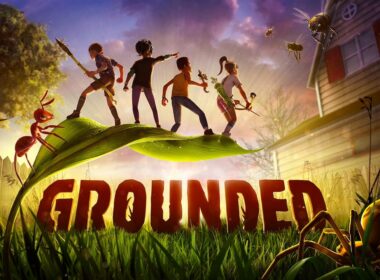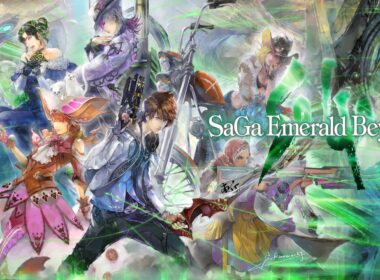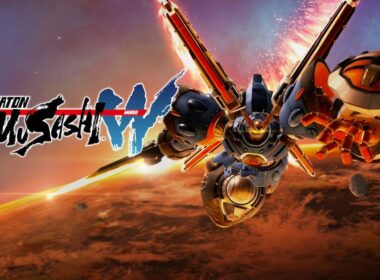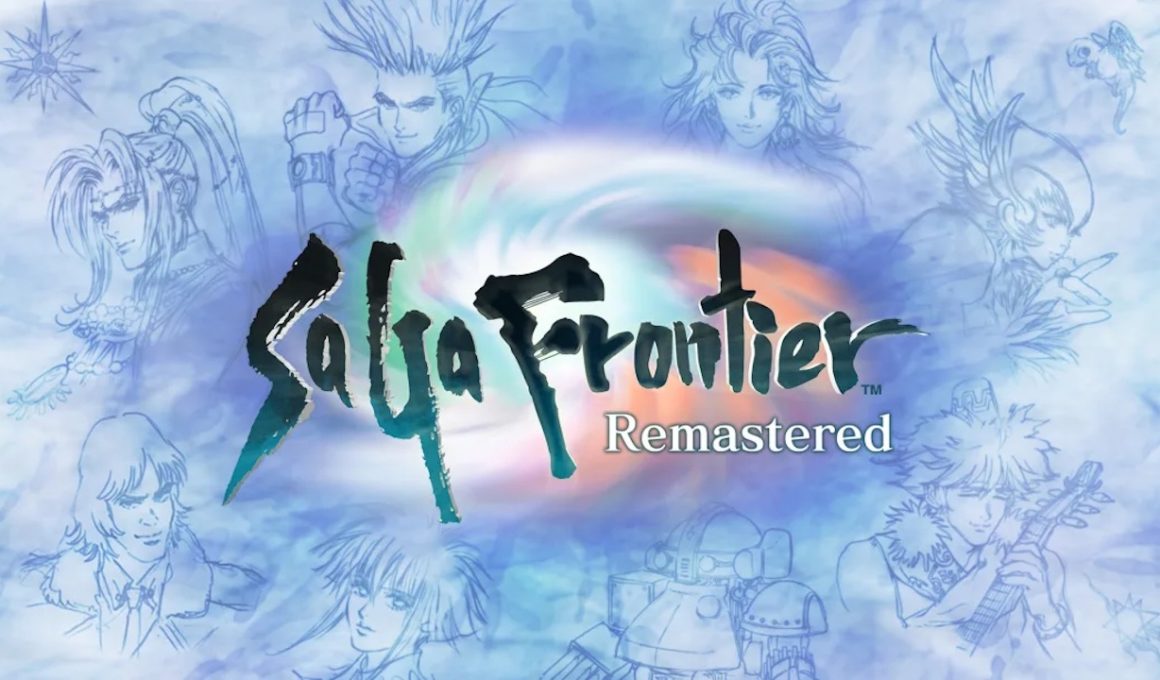Saying that a SaGa game “isn’t for everyone” shouldn’t surprise fans at all. These games are incredibly difficult to introduce to newcomers since they defy JRPG traditions at nearly every turn. I’m going to hit you with a seemingly contradicting statement: Despite that, the games have always been ahead of their time in very specific ways. Despite starting in the ’90s, they feature several design choices that make them comparable to modern open-world games. They’re needlessly obtuse, massively open-ended, have scopes that far outreach their budgets, incredibly challenging at points, and easy to completely destroy the game balance if you know what you’re doing. Their existence is a contradiction. They are probably the most fascinating example of RPG game design I have ever seen. They all tend to be incredibly flawed (except SaGa Scarlet Grace: Ambitions which is lowkey the best game of 2019, check out my review!), and I love them for that.
Clearly, someone at Square Enix understands the niche appeal this series has because in the last few years it has received a big worldwide push. Not only have we received several incredibly high-quality remasters, but two of the series best titles (Romancing SaGa 3 and SaGa Scarlet Grace: Ambitions) were finally able to come west. So when SaGa Frontier Remastered was announced, I wasn’t exactly surprised. I was however deeply excited, especially when it was revealed that cut content was going to be restored. I have never played SaGa Frontier before now, but everything I read about it looked to be the most “SaGa” from any game in the series.
If you go into a SaGa game expecting a deep and engaging story, you’re going to be disappointed. That’s not exactly a bad thing, and I’d argue the minimalism only makes the game stand out. The world is split into several realms, called The Regions, all with vastly different aesthetics. It honestly feels like the art team had a bunch of cool ideas for areas to explore and didn’t even bother trying to fit them together in a seamless manner. Traveling to other Regions is done with a menu, with no semblance of a connected world. And you know what? I love that. It’s completely unapologetic in wanting to deliver an insanely unique experience to the player. Progress is left to the player to figure out depending on the story they pick, and is extremely open to encourage exploration.
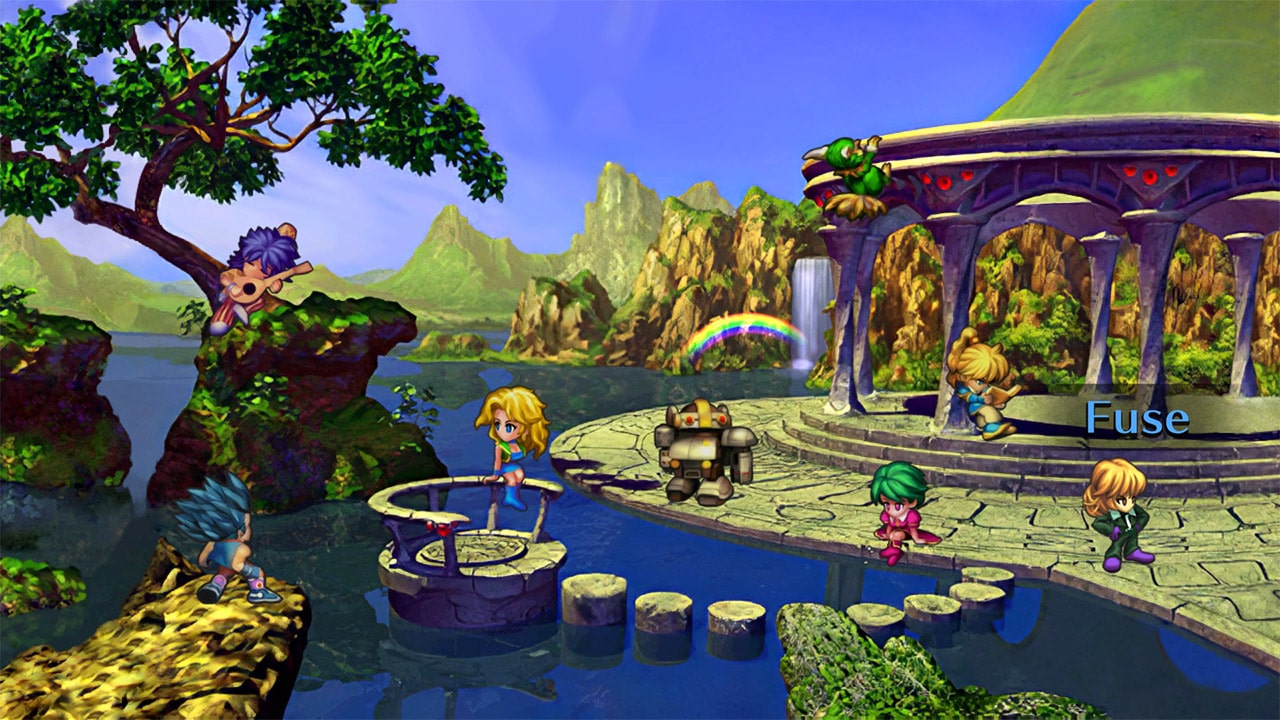
You have seven protagonists to pick from the start, all with a unique story campaign and goal. When you clear your first playthrough you’ll unlock an eighth playthrough that is entirely new for this remaster, letting you play as an IRPO agent named Fuse. You can clear each story in about 7-10 hours, and that time will decrease with each one you clear as you get more efficient.
I’ve only done Red’s story, which is one that was recommended to me as the best first story to go through. The first half of his story is linear, introducing the world and what players should expect from SaGa Frontier Remastered, and it works especially well if you’ve never played one of these games before. He also turns into the Sentai hero “Alkaizer”. I’m not kidding. His whole gimmick is that he’s a masked superhero, and can only turn into that when no one is watching. I don’t engage with Kamen Rider (not by choice, I just don’t have the time), but this is basically just a big reference to that entire series. It affects gameplay too, in that you can only turn into Alkaizer if you have no humans in your party that can see you do it. However, that means you can also turn into Alkaizer if your other party members fainted or were given the blind status effect.
If little details like that amaze you, then you honestly don’t need to read any more. This game is for you. You should keep reading more anyway though. It’d make me happy.
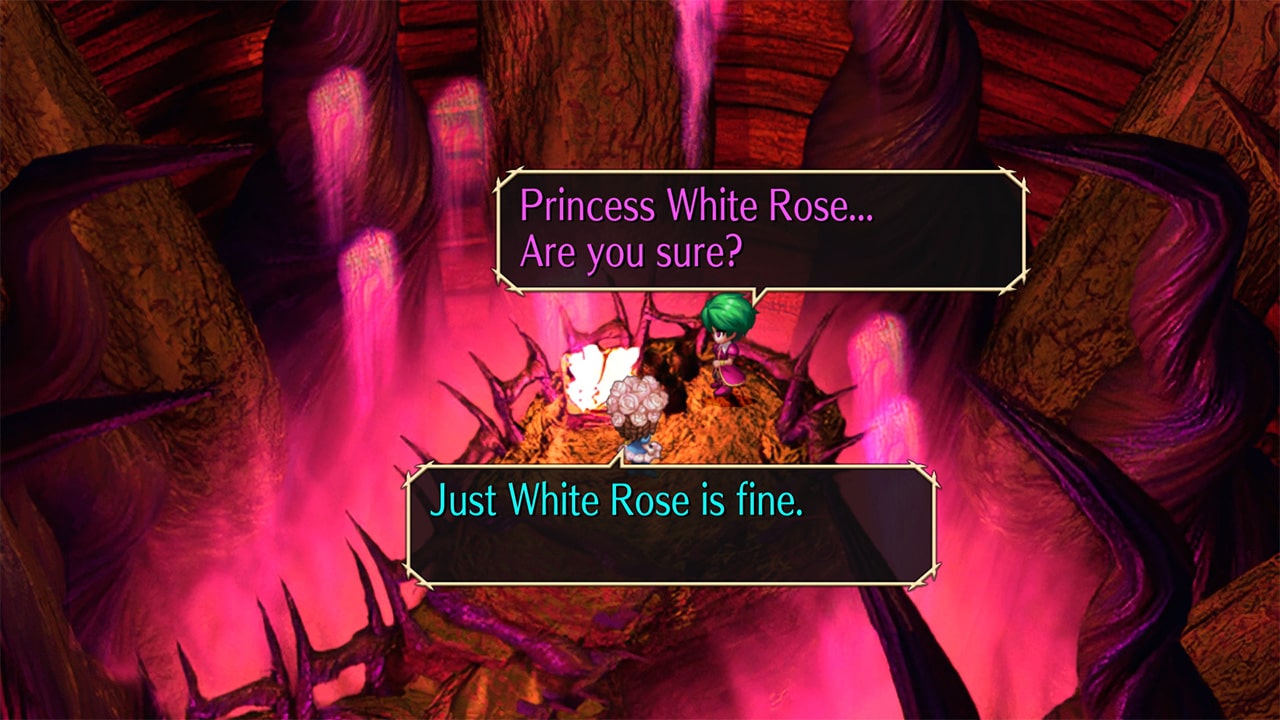
SaGa Frontier Remastered’s gameplay loop is incredibly straight to the point, which works wonderfully with a game with such a high difficulty ceiling. Fights are gorgeously dynamic, with a moving camera based on what attacks the massively customizable party dish out. There are several weapon types, each with different ways to use them and expand their move sets. Melee weapons are your standard damage options, and can unlock new abilities randomly in battle by just using them. Guns have ammo that is reloaded between fights. Magic needs to be bought, and, more importantly, unlocked in a series of complicated quests. Very little of this is explained to the player outright, they’ll need to experiment and explore to figure it out.
Battles start decently challenging, and unless you learn how to cheese the difficulty will get even harder. Character growth is also random, but like with all SaGa titles is balanced around this. Combat encounters are no longer random, with enemies appearing on the gorgeous pre-rendered backgrounds. You now run into them to start fights, or can run past them if you want to make a beeline to bosses in dungeons. After a fight, the characters who survived until the end of the battle will gain stat increases in random areas. If anyone dies they’ll lose 1 LP, and if that LP drops to 0 that character cannot be used again until you rest at an inn.
With a game this non-linear, balancing the difficulty can be pretty difficult. If I were to separate myself from my pure adoration of SaGa “jank”, this is a pretty big “objective” flaw. You can frequently end up going to an area you aren’t ready for and not even know it. You could find all of the enemies in an area manageable, and then go to the boss and get instantly wiped. Some dungeons will allow you to leave and regroup if you find the boss too hard, but not every dungeon. Save frequently and before every dungeon you visit. You’ll thank me later. You can easily find yourself soft-locked if you make it to a boss and can’t beat it. You can only use weapon skills with WP and magic with SP, which only replenish when you travel to a different Region or rest at an inn. If you’re at a boss and have no WP or SP, and can’t leave, you have essentially ended your playthrough. Some indication for this would have been appreciated, and thankfully my natural worried nature prevented this from being too much of an issue for my playthrough.
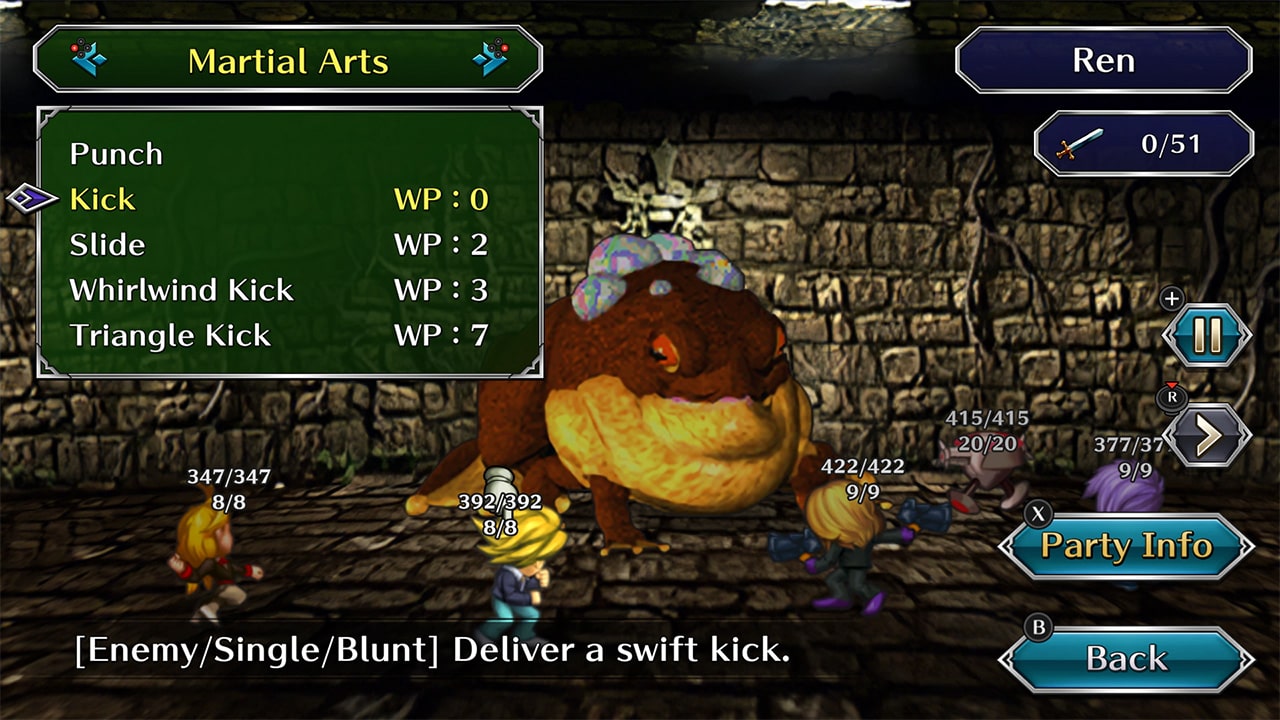
Overall, I enjoyed combat a lot. SaGa Frontier Remastered’s combat focuses on mastering the few systems in place and staying on your toes. The tide of battle can change fast, so you need to be ready for anything. It feels like it never gets too difficult for those willing to learn the mechanics, and battles play out so fast that I never got bored. It’s not perfect, and I frequently hit walls, but I honestly wouldn’t want a SaGa game to play out any other way.
Despite any of my gripes with the gameplay, as a remaster of a PS1 game this might be one of the best I’ve ever seen. That sounds like an exaggeration, but I’ll stand by it. The sprites have been redrawn to perfectly match what the pixel art was going for. All of the personality featured in the sprites has been retained, and even enhanced. The game has been updated to fit widescreen displays, with redone pre-rendered backgrounds. Square Enix remasters tend to not handle PS1 pre-rendered backgrounds in the best manner, so I was blown away when I saw the quality of these. To my knowledge, every pre-rendered background was AI upscaled and is now presented in 16:9 with the exception of certain overworld maps. It’s amazing to run around in.
Gameplay also got a massive improvement thanks to Square’s typical speed up options featured in their remasters. You can do this on the field, but it can make things difficult to control. In battles though? It completely adds a new flow to combat. I wasn’t able to turn it off after I started speeding up battles. The default speed option is fast enough to be snappy yet not fast enough to feel unnatural. The best improvement (one that I was surprised to hear wasn’t in the original game) is easily being able to flee from battles. It makes it much more viable to make it to the end of an area, memorize the layout, leave, heal up, and make a beeline to the boss and run from every encounter to preserve WP.
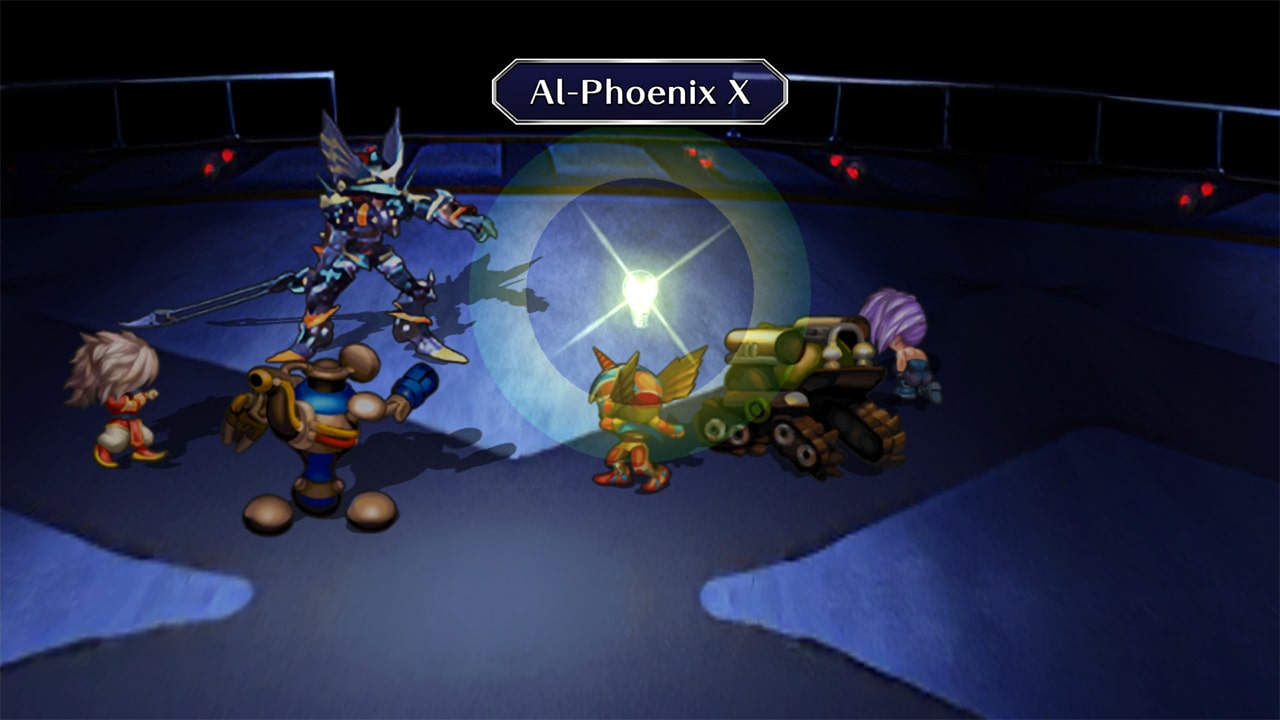
Again, SaGa Frontier Remastered is not a game for everyone. I wasn’t able to notice any of the new content in this initial playthrough, but I’m excited to play more and uncover all of the secrets. SaGa Frontier has always been known as being unfinished, but all of the restored content (which can be toggled off at the beginning of the playthrough for those wanting an original experience) and amazing quality of life improvements makes this the definitive version of this game. This is now the new bar for Square Enix remasters, one I hope they continue to meet. I’d still recommend SaGa Scarlet Grace: Ambitions as the best SaGa game for newcomers, but this is probably now my second favorite in the series. It’s flawed, charming, and so very ’90s. The score doesn’t really matter. If you’re looking for something different and open ended, this is something that needs to be on your radar.
Version Tested: Nintendo Switch
Review copy provided by Square Enix


